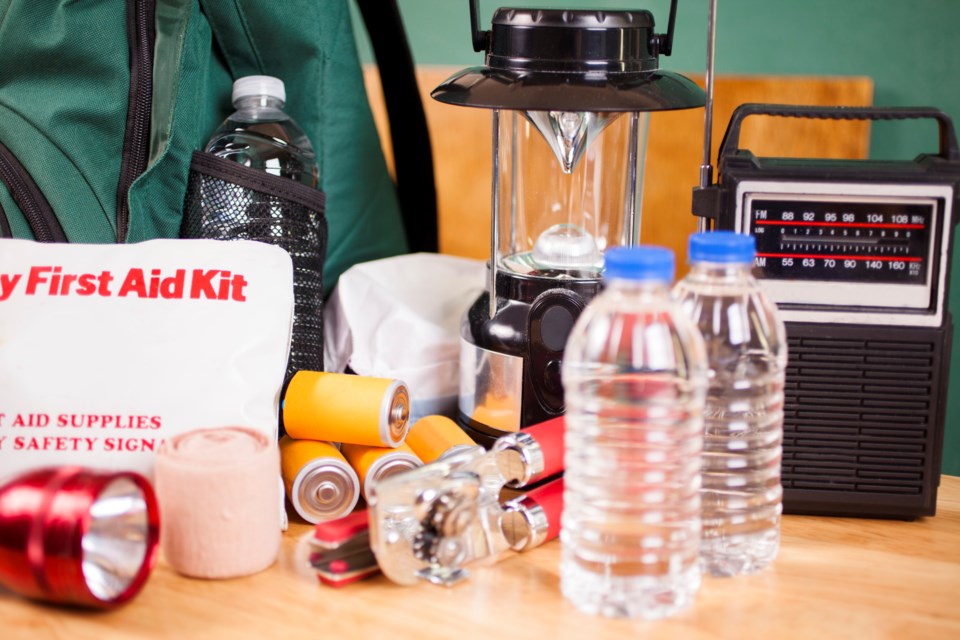Despite living in an earthquake zone, recent record breaking temperatures and an unprecedented wildfire season, less than 30 per cent of British Columbians say they have an emergency plan in place.
A poll conducted by between July 31 and Aug. 3 found that fewer British Columbians have taken three recommended steps to prepare for an emergency than in 2019, the last time the poll was conducted.
The poll found that only 38 per cent of British Columbians have bought or prepared an emergency kit with supplies they might need, down six points in two years.
Only 22 per cent have established a meeting place with family or friends in case of an emergency, down 13 points since 2019, and 28 per cent – down 11 points in two years – have prepared a plan that includes how to get in touch with family or friends should an emergency happen.
When it comes to southern B.C., only 30 per cent have acquired an emergency kit, 24 per cent have designed a plan and 14 per cent have established a meeting place.
“Everybody always wants to think of it next year,” said Mark Friedman of Richmond-based SOS Emergency Response Technologies. “When it comes to an emergency disaster, most people here are not prepared.”
Meanwhile, Richmond Fire-Rescue Deputy Chief Jim Wishlove said people should plan to have enough supplies to look after themselves for 72 hours in case of an emergency such as an earthquake, as emergency responders will be prioritizing immediately life-threatening situations and sorting out the reaction plan, including where to safely direct people.
But he pointed out that many people likely already have many of the supplies they would need, such as bottled water in the fridge and food in their pantry, clothing and good walking shoes.
“The reality is, people probably are anywhere from 60 to 90 per cent equipped already, they just haven’t considered that perspective yet, that they already have a lot of these things,” he said.
Wishlove also recommended people sign up for , the city’s emergency alert system.
Good resources, Wishlove said, are and the websites, with information on what risks to be aware of and how best to prepare, including information for children, seniors, people with disabilities and pets.
He also suggested people get to know their neighbours, check in on them and see if they might need help due to mobility or other issues.
Friedman said the three key things are “plan, product and practice,” meaning people should have a plan in place in case of an emergency as well as supplies, which he recommended keeping in a backpack. In addition to food and water, he also recommended items such as a first aid kit, flashlight and battery-powered or wind-up radio.
“In the plan – what kind of disasters can we see here? Chances are tornadoes are pretty low, but forest fires, floods, earthquakes,” he said. “Now that you’ve identified what you want to have in your kit, where’s your outside point for safety, where’s your inside point for safety?”
The plan doesn’t have to be complex – Friedman said he likes to have a “simple plan, that’s easy” and can be reviewed once a year so people know where the supplies are and if anything needs to be swapped out such as batteries.
Wishlove, meanwhile, noted that while the focus is often on a large-scale, regional events such as a major earthquake, emergencies “can happen daily to people.”
For example, he said, a small fire in the kitchen could lead to a family being out of the house for six to eight weeks while it’s being repaired.
“That is, in our opinion, an emergency, and those types of emergencies happen much more frequently… So smaller emergencies are the things we really need to focus on, first off preventing and secondly being able to look after ourselves, or our neighbours or anybody else in our community should those things happen,” he said.
“So that’s really one of the areas we should be focusing on, which will give us more space and survivability, let’s say, for something much larger.”
Poll results are based on an online study conducted from July 31 to Aug. 3 among 800 adults in British Columbia. The margin of error, which measures sample variability, is plus or minus 3.5 percentage points, 19 times out of 20.
With files from Mario Canseco, Glacier Media



